Hi Sewcialists! My name is Meira, and today we’ll learn about tekhelet (pronounced, teh-KHEH-let, with a “kh” like the sounds in challah, Bach, or Khaled). Tekhelet refers to both a dye and the colour it made. It was once precious to Jews and was lost for many centuries, but its influence has remained with us.
Ancient Colours
Let us start by going back in time. Back far — very far. Thousands of years. Imagine that we are standing in the area once referred to as the Levant — composed of parts of the Middle-East, North Africa, and the Mediterranean. Picture stony scrub-land; a brown ground sprinkled with muted greens below a clear blue sky.

Nimrod Fortress
The people around us are clad in soft whites, greys, and browns — the colours of linen, wool, and leather. We are several thousand years away from the discovery of synthetic dye. In this world, bright colours are rare and precious. So precious, in fact, that a story is told of a boy whose father gave him a coat of many colours, evoking such jealousy among his brothers that they conspired to kill him.
We know from myth, religious tradition, and archaeological evidence that these ancient people knew how to make vivid, colourfast dyes, worth many times their weight in gold. They knew how to make argaman, a red-purple from sea snails, which we now call Tyrian purple. They knew how to make shani, a deep red from the insect Kermes vermilio, which we now call “crimson.” They knew how to make tekhelet, a rich blue; the colour of the sky.
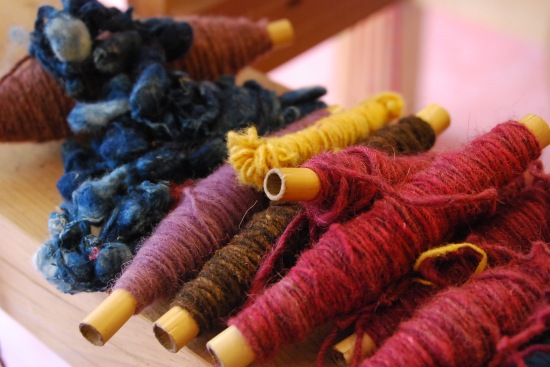
Photo from here
The earliest written reference to tekhelet was found on a stone tablet in El-Amarna, Egypt. Thirty-four hundred years ago, Princess Tadukhipa married Pharoah Amenhotep III. An accounting of her dowry includes a sabbatu su takhilti, a dress or sash of tekhelet.
In the Torah, tekhelet is first mentioned in the book of Shemot (Exodus), as one of the dyes needed for making cloth walls of the Israelites’ portable Temple. While the ancient Israelites wandered in the desert, the precious Ark of the Convenant was wrapped in a cloth of tekhelet, and carried on the shoulders of the priests, who wore the same shade. In the lives of the ancient Israelites, the blue of tekhelet was the colour of holiness.
Thus You Shall Be Reminded
Throughout the Levant, rectangles of fabric were used to make tunic-like garments and cloaks, with embellished hems and tassels on the corners. These were considered intimately personal; hems were used in rituals of exorcism, prophecy, and divorce. A tassel pressed in wet clay could even serve as a signature. In fact, many Jews continue to wear these types of garments. A tallit—a rectangular shawl worn while praying—has a tassel in each corner. Some also wear a smaller version of a tallit as part of their every-day clothes.

You can see a medium-sized tallit on the left-most person, a tallit for daily wear day one on the person in the middle near the wall with the white kippah, and larger tallitot on the people on the right. Photo from here.
As in ancient times, the fringes are not only decorative. The practice arises out of the following passage in the Torah:
Speak to the Israelite people, and instruct them to make for themselves fringes on the corners of their garments throughout the ages; let them attach a cord of tekhelet to the fringe at each corner. […] Thus you shall be reminded to observe all My commandments and to be holy to your G-D.
B’Midbar (Numbers) 15:38-15:40
We are commanded to take this tekhelet, this blue that was the colour of the Temple, the colour of the priests, and wear it, each of us, as a personal reminder to be holy.
But I have never seen tekhelet. Few have. In 70 CE, the Roman Empire breached the walls of Jerusalem. They destroyed the Second Temple, with its curtain of blue. They burned the city, killing, enslaving, or expelling most of its inhabitants. While there were Jews who stayed in the fallen kingdom of Judea, many went to Babylonia, in modern-day Iraq, which became the centre of Jewish Diaspora.

“The Spoils of Jerusalem” from the Arch of Titus, built ten years after the fall of Jerusalem to celebrate the Roman conquest.
Around 550 CE, the writers of the Talmud (a rabbinical text) recorded that the knowledge of how to make tekhelet had been brought to Babylonia, even recording a brief summary of the process. A mere two hundred years later, an anonymous writer lamented: “And now, we have only the white [threads], for tekhelet has been hidden.”
What happened? How could something so important become “hidden?” While we don’t know for sure, there are probably many reasons why Jews stopped making and using tekhelet. To start with, how to make it hadn’t been public knowledge to begin with; dyers protected their business by keeping their methods quiet. Furthermore, the infrastructure that allowed for fine dyeing — the workshops, the trade routes, the merchants — was altered or destroyed. Finally, when the Romans took power, they applied tight regulations to the dye industry. Not only were the dye-houses under imperial control, the unauthorized making, wearing, selling, and even owning of blue or purple dye was punishable by death. It is hard for knowledge to survive under such harsh conditions. One day came, some thirteen centuries ago, when no one alive could recall the secrets of tekhelet.
In Search of a Creature
The centuries passed and new dyes were discovered. In the late 1800s, a Hasidic rebbe named Gershon Hanokh Leiner decided that it was high time that Jews started wearing tekhelet again. The Talmud states that the source of tekhelet is the hillazon. The ancient rabbis were adamant: tekhelet cannot be made from anything else. The problem? Not even the ancients said what, exactly, a hillazon was.
Leiner combed through all the sources he could find and created a list of characteristics: it was a sea creature; it had some sort of “covering” that “grew with it;” it had “curled protrusions” coming out of its head; and its “blood” produced dye the colour of the sky. Leiner identified Sepia officinalis, the common cuttlefish, as the ideal candidate: it lives in the sea, has a hard bone under its skin, has protrusions around its head, and has an ink sac full of black liquid. Sepia dye is brown and doesn’t stick to wool, but by adding iron filings and potash, Leiner could get a colourfast blue dye. He and his followers proudly wore their blue fringes, overjoyed that they could fulfil this ancient duty.
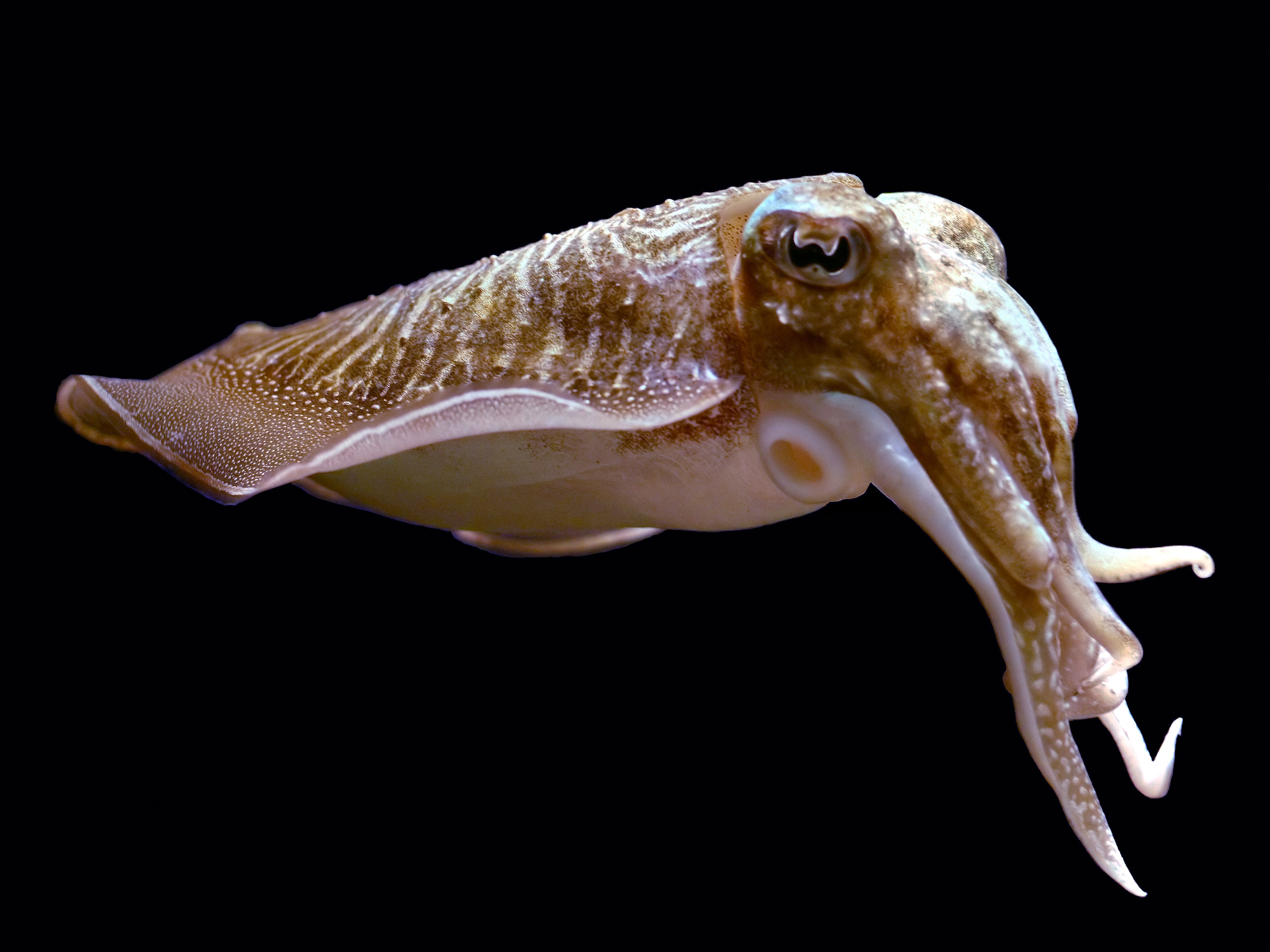
Sepia officinalis, the common cuttlefish. Photo from here.
In the early 1900s, a man named Isaac HaLevi Herzog questioned the late Rebbe Leiner’s process. In addition to being a rabbi, Herzog had written a doctoral thesis called “The Dyeing of Purple in Ancient Israel.” He sent samples of Leiner’s dyed fibres to chemists in Germany and France. The results were shocking: the samples had been dyed with Prussian blue, a modern dye. Herzog was perplexed and troubled; Leiner had been a devout man — surely he had not deceived his followers. Indeed, Leiner had not deceived anyone. He and his followers had believed that since iron is grey and potash is white, these additives were incidental to the dyeing process, and therefore the sole source of the blue colour was the cuttlefish. But in fact, the iron and potash were reacting with organic compounds from the cuttlefish to produce Prussian blue. It was the cuttlefish that was incidental; it could be replaced by any animal product — ox blood was used commercially — with the same result. Upon learning this, Herzog concluded that the hillazon could not be a cuttlefish. The ancients would not have insisted on a specific, rare creature when any animal would do equally well.
Herzog looked towards the research and archaeological finds related to Tyrian purple. It was already known that Tyrian purple comes from shellfish; huge troves of shells had been found in dye houses around the Mediterranean. Herzog agreed that Hexaplex trunculus, a sea snail, might be the elusive hillazon, but he remained unsure. Hexaplex trunculus sometimes yields blue, but sometimes yields blue-violet. How could tekhelet be partly violet, if tekhelet is explicitly said to be the colour of the heavens? The sky is never violet; the ancient Israelites could see that as well as anyone. Other scholars considered the case closed. After all, the Romans considered everything from cranberry to violet as Tyrian purple, so the ancient Israelites must have considered both violet and blue to be tekhelet.

Hexaplex trunculus is in the middle. Photo from here.
The Secrets of the Dyers
The etymology of the word tekhelet vindicates Rabbi Herzog. The Sumerian term for blue was za.gin.na, which meant “the colour of lapis lazuli.” Translated into the Semitic language spoken by the Akkadians, the word becomes uqnâtu, which commonly describes the sky, and its synonym takiltu, which is itself equivalent to the Hebrew tekhelet. Tekhelet, like the sky and like lapis lazuli, referred only to blue.
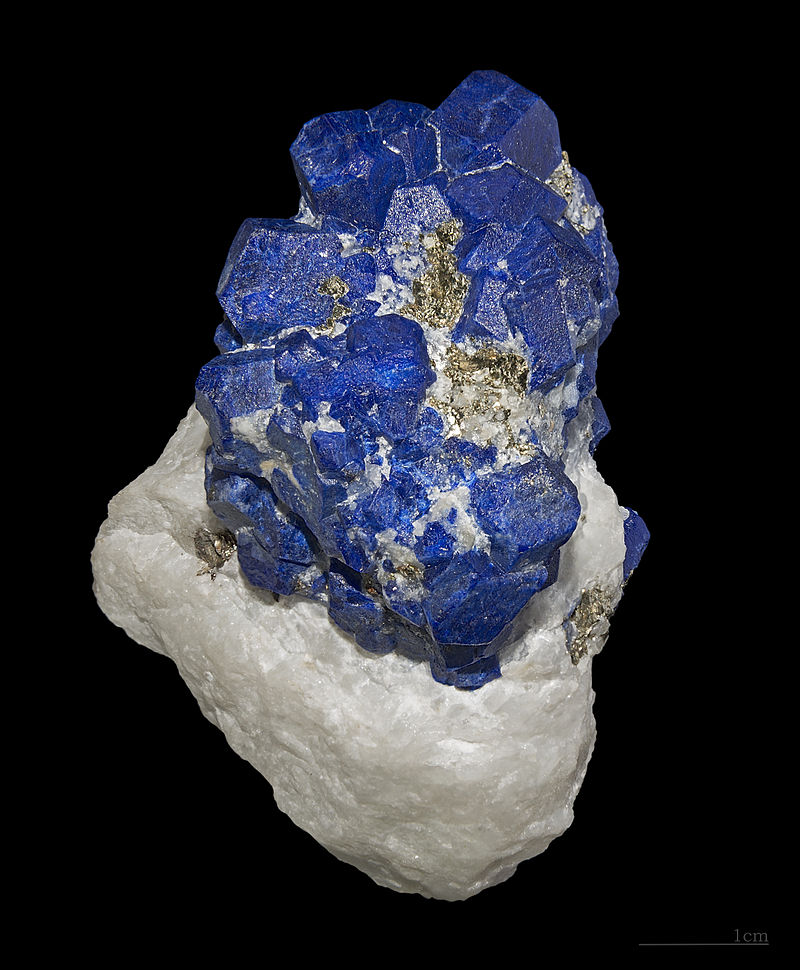
Lapis lazuli, photo from here.
In the 1980s, Otto Elsner, a dye chemist, made a fascinating discovery. He had joined the search for tekhelet and was experimenting with Hexaplex trunculus. Let us now view dye through the eyes of a chemist, rather than a biblical scholar. Hexaplex trunculus contains indigo (blue), and mono- and dibromoindigo (red and purple) compounds. These compounds need to be undergo reduction, a chemical reaction in which they gain electrons, in order to dissolve in water and be taken up by the fibre. This turns the dye solution into a clear yellow-green fluid. When the fibre is dipped and exposed to air, the dye compounds shed their extra elections, a process called oxidation. This causes the dye to bind permanently to the fibre and change from yellow-green to its true colour.
Elsner chose to work next to an open window, to dissipate the smell of the shellfish. As expected, the wool turned yellow-green, then settled into its final purplish colour. That is, on cloudy days. On sunny days, it turned a deep, colourfast blue.
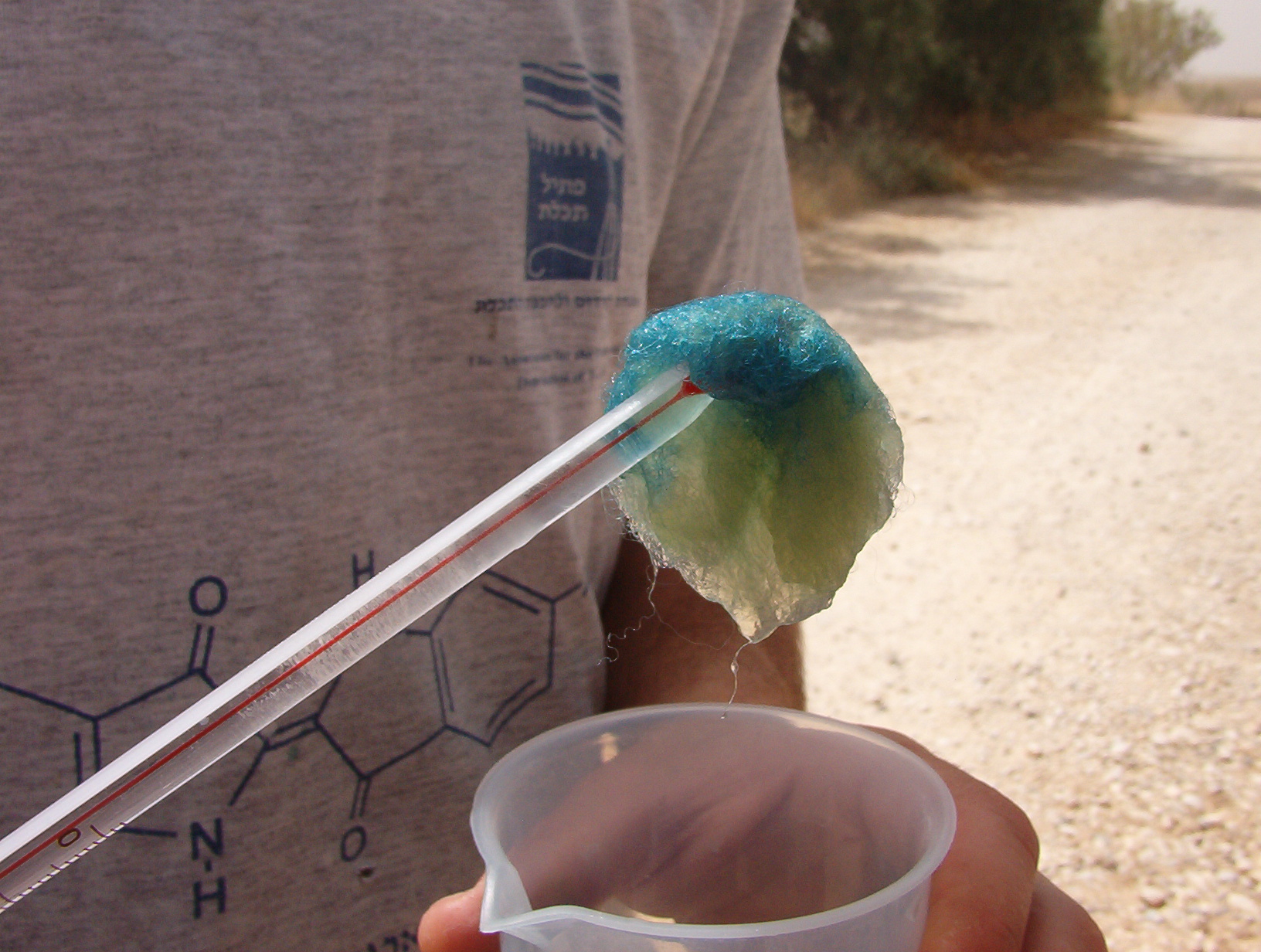
A bit of wool, mid-oxidation, photo from here.
That was it, then! The key ingredient was not iron filings or cuttlefish, but sunlight. It seems fitting, in a way, that the sun would cause the colour of the sky to be copied on Earth. As the chemical reaction of reduction occurs, the indigo compounds become less stable. When irradiated by the sun’s ultraviolet light, mono- and dibromoindigo lose their attached bromine and become pure indigo, eliminating red and purple from the mix. The dyers worked in daylight, after all, and the sun shines brightly on the coast of the Mediterranean.
The last piece of the puzzle was the reducing agent itself. Nowadays, we use synthetic chemicals when working with indigo compounds but this was not an option in ancient times. John Edmonds, an industrial engineer who spent his retirement tinkering with dye, solved it. He read the writings of Pliny the Elder and concluded that the ancient dye baths had included the bodies of the snails, not just their coloured secretions. He a brewed a snail-and-dye bath that included salt to kill off all but the strongest bacteria, kept the odiferous mixture warm, and found that Clostriduim bacteria — the vile genus that produces C. difficile and C. botulinum — grew, and reduced the dye naturally.

Tekhelet with Hexaplex trunculus shells, photo from here.
Tekhelet Today
Where is this colour now? While there are organizations that manufacture dyed wool from Hexaplex trunculus on a small scale, it has not returned to everyday use. It is expensive and would not be ecologically sustainable on a larger scale. Moreover, tekhelet remains contentious. “Two Jews, three opinions” — you know how the saying goes! A very small group of Chasidic Jews maintain that Leiner was correct, and continue to use cuttlefish-derived dye. Karaite Jews disagree that a holy dye would come from a shellfish, which is not a kosher animal. Instead, they posit that Indigofera tinctoria, the indigo plant, was the true source of tekhelet. Additionally, many Jews feel that since we cannot be truly certain that Hexaplex trunculus is the hillazon, it is best not to risk being wrong, and thus continue to wear white fringes.
Regardless, the influence of tekhelet remains. Jewish holiday decorations, greeting cards, and wrapping paper are often blue. Pieces of Judaica, like challah covers and seder plates, are often blue. Even the blue stripes on the Israeli flag came from the fact that a tallit is often decorated with stripes of blue, itself in memory of tekhelet. It’s all around us, that rarest of blues, that blue like lapis, like the heavens, like the long-lost curtain around the Holy of Holies; blue like the sea itself with its mysterious little creatures.
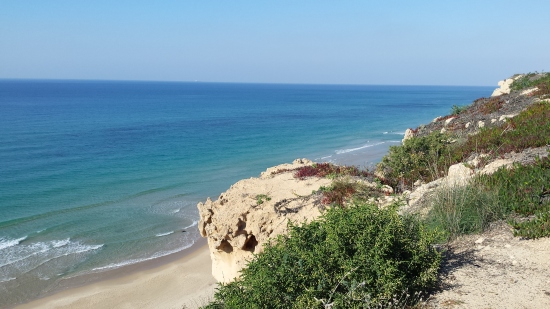
The coast of the Mediterranean sea.
Meira Bear lives in in Toronto with her husband, their miniature lemon tree, and many boxes of fabric stashed under the bed. She works as a resident doctor and takes naps whenever possible. She blogs here and is on Instagram here.
Sources:
Quotes and photos are linked to their sources. Unlinked photos were taken by the author.
- “Genesis 37:18.” Sefaria, http://www.sefaria.org/Genesis.37.18?lang=bi&with=all&lang2=en.
- Sterman, Baruch, and Judy Taubes Sterman. The Rarest Blue: the Remarkable Story of an Ancient Color Lost to History and Rediscovered. Ptil Tekhelet, 2017.
- “Tekhelet Timeline.” Ptil Tekhelet, Ptil Tekhelet, 23 Feb. 2020, http://www.tekhelet.com/tekhelet-timeline/.
- “Tekhelet.” Wikipedia, Wikimedia Foundation, 21 Mar. 2021, en.wikipedia.org/wiki/Tekhelet.

This is a truly wonderful and fascinating post! I have been listening to parts of the Old Testament/Torah on audio recently and it’s really brought it alive – and this article has just made my imagination explode with coloured-in details about the life of the early Jews in the desert. Thank you!
I’m so glad you liked it!
Meira, you are an extraordinary writer! What a beautiful way to tell a complex story. While I’m selfishly glad you are a doctor not one hour from my house, you clearly have many other talents!
That’s so kind of you, Gillian! I had no idea you were so close by 🙂
What a fascinating story, and so very well written! Thank you for sharing it.
Thanks so much!
I really want to thank The Sewcialists for their extraordinary grace in allowing me to send in this article, um, (looks at watch) five months after I said I would. Writing this was SO MUCH a wellness activity for me, and I’m so grateful!
What a glorious article on such an ancient subject, yet one of such interest to so many. Thank you so much for this, and for all that you do in your “other life” of medicine.
Aw thanks, that’s so kind of you. It’s been a weird work year, that’s for sure!
Thanks for the very interesting post! I love the way you wove history and culture into a story about this very special blue. Such a nice way to start the week. Pat in Ottawa
Thanks, Pat! I’m glad you liked it.
What a fantastic tale you wove with that, thank you so much. Absolutely wonderful writing.
Thanks, Heather!
I just loved reading this history. Thank you for sharing it.
Thank you! I’m glad you enjoyed it.
Beautifully written; interesting topic! Thank you!
I’m glad you liked it!
This is an amazing story of a lost art. You described it all so beautifully that I was enthralled.